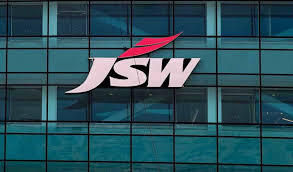In today’s volatile global market, supply chain agility has evolved from being a competitive advantage to an absolute necessity. The recent disruptions—from the COVID-19 pandemic to geopolitical tensions and natural disasters—have underscored the need for businesses to pivot quickly and effectively in response to unforeseen challenges. But what does it mean to have an agile supply chain, and how can companies achieve it?
What is Supply Chain Agility?
Supply chain agility refers to a company’s ability to adapt, respond, and recover swiftly from disruptions while maintaining operational effectiveness. Unlike traditional supply chains, which often focus solely on cost efficiency, agile supply chains emphasize flexibility, visibility, and resilience.
Gartner identifies agility as a critical element for future-ready supply chains. By fostering adaptability and responsiveness, organizations can minimize risks, maintain customer satisfaction, and seize new opportunities faster than competitors.
Why is Agility Essential Today?
- Rapid Market Changes: Consumer demands are evolving at an unprecedented pace. Agile supply chains can anticipate and adapt to these shifts.
- Global Disruptions: From trade wars to pandemics, disruptions are unavoidable. Agility ensures businesses can pivot their strategies without significant losses.
- Technological Evolution: Emerging technologies like AI, IoT, and blockchain are reshaping supply chain operations. An agile approach integrates these technologies seamlessly for better efficiency and decision-making.
Strategies to Build Supply Chain Agility
- Enhance Visibility with Data and Technology:
Real-time data is the backbone of an agile supply chain. Leveraging technologies like IoT sensors and AI analytics can provide comprehensive visibility into every link of the supply chain. With this visibility, businesses can predict disruptions and respond proactively. - Diversify Your Supplier Base:
Relying on a single supplier or region for critical components is a recipe for disaster. An agile supply chain spreads risk by working with multiple suppliers across various regions, ensuring continuity during localized disruptions. - Embrace Digital Twins:
Digital twins—a virtual replica of the supply chain—allow organizations to simulate scenarios, test strategies, and identify potential bottlenecks. This proactive approach reduces downtime and enhances decision-making. - Invest in Workforce Agility:
Agile supply chains require agile teams. Providing cross-training, encouraging collaboration, and fostering a culture of adaptability equips your workforce to manage sudden changes effectively. - Implement Demand Sensing:
Traditional demand forecasting methods often fail in volatile markets. Demand sensing uses advanced analytics and real-time data to predict consumer behavior more accurately, allowing businesses to adjust their inventory and production plans.
Real-World Examples of Supply Chain Agility
- Apple: Apple’s ability to pivot its supplier network during disruptions has allowed it to maintain consistent product delivery despite global challenges.
- Zara: The fast-fashion giant exemplifies agility by designing, producing, and delivering new products in just a few weeks, adapting rapidly to changing consumer trends.
- Procter & Gamble (P&G): By leveraging advanced analytics and predictive tools, P&G has optimized inventory management and streamlined supply chain operations to minimize disruptions.
Measuring the ROI of Agility
While the initial investment in agile technologies and processes may seem high, the long-term benefits far outweigh the costs. Agile supply chains reduce lead times, lower inventory costs, and enhance customer satisfaction. Moreover, the ability to recover swiftly from disruptions minimizes revenue loss and protects brand reputation.
The Future of Supply Chain Agility
As the world becomes more interconnected and unpredictable, supply chain agility will remain a cornerstone of business resilience. Companies that invest in agile frameworks today are positioning themselves for sustained success in the face of tomorrow’s uncertainties.
In conclusion, supply chain agility is no longer optional—it’s a business imperative. By adopting advanced technologies, diversifying supplier networks, and fostering an agile workforce, organizations can navigate disruptions with confidence and emerge stronger. The question is: Is your supply chain ready for the next big challenge?







